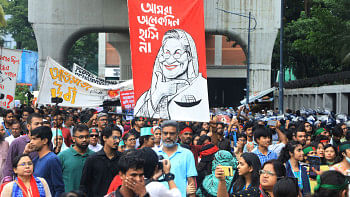90pc of cyclone-hit people now above poverty line: survey
Around 90 percent of the beneficiaries of a World Bank project for victims of cycles Sidr and Aila now have annual income upwards of Tk 60,000 on average, according to a household survey of 2014.
Around 86 percent of the people covered by the Emergency 2007 Cyclone Recovery and Restoration Project or ECRRP went above the poverty line, according to the survey conducted in 2013. The numbers were 58 percent in 2012's survey and 33 percent in 2010's baseline survey.
The World Bank has been supporting the government through the ECRRP to build long-term disaster preparedness and to restore the livelihoods of the people affected by the cyclones in 2007 and 2009.
ECRRP has been constructing new cyclone shelters, repairing the existing ones and building roads to the shelters in cyclone-prone areas.
It has also been repairing embankments, making peoples' lives and livelihoods safer and more resilient.
In addition, the project has provided agricultural support to farmers with improved seeds, agricultural tools, livestock, fish fingerlings, household silos and hands-on training on the use of such technology.
The project is also supporting the preparation of the first phase of a 15-year government programme for disaster risk reduction.
ECRRP has already constructed 136 new multipurpose disaster shelters that double up as primary schools during non-emergency situations. Construction of 65 new shelters will be completed by June.
The target is to construct 330 new shelters by 2017. The project has completed renovating 241 existing shelters, out of a target of 460 shelters to be repaired by 2017. Another 81 will be renovated by June this year. Repair works for 260km coastal embankments have been completed out of a total target of 460km.
The World Bank has so far supported ECRRP with $324 million. In addition to WB financing, the Global Facility for Disaster Reduction and Recovery ($2.96 million), the Bangladesh Climate Change Resilience Fund ($25 million) have contributed to the project.

 For all latest news, follow The Daily Star's Google News channel.
For all latest news, follow The Daily Star's Google News channel. 



Comments